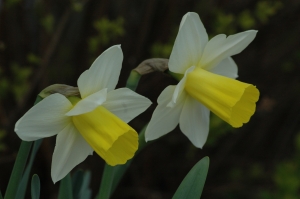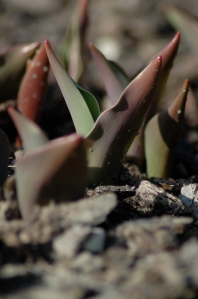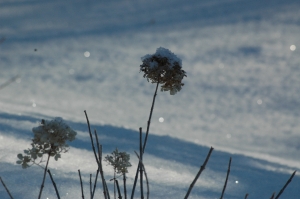Is the spring snow good for my gardens? Yes!! Even though we have been experiencing Spring Fever, and we are anxious to see the snow give way to some sun, these late spring snow’s are helping our landscapes.
• “Is all this snow good for your garden?” According to the National Weather Service, almost 53 percent of the U.S. is currently covered in snowpack. There also is a weather lore that tells us, “Year of snow, crops will grow.” If there is any truth to this, we can look forward to a good growing year.
• A good explanation of why snow helps our landscapes is found in Purdue Publication HO-203. “On clear, windless nights, temperature inversions can cause cold air to pool in low areas, called ‘frost pockets.’ An inversion exists when the temperature is colder closer to the ground than it is higher up.
As the sun sets, surface temperatures drop, and the air directly above the ground becomes cooler. Since cold air is heavier than warm air, it will form a layer above the ground. The cold air flows downhill and settles in valleys and low areas, much like water.”

Snow forms an insulating blanket over the ground by raising the soil temperature where frost pockets form and, as a result, protects dormant perennial flowers, shrubs and trees.
• Snow helps to avoid the freezing and thawing of the soil that happens during the winter. Many plants have been boosted right out of the ground during these periods and have died due to the roots drying out.
• When the old snow melts between snowfalls, it waters the branching roots that grow continuously underground and keeps plants hydrated.
If you have dormant plants in sheltered areas with no snow, shovel some of it around the root zone to help keep the plant from drying out. This can be a good way to redistribute too much snow accumulation from an area of the landscape.

• If snow piles up on evergreens, gently brush it off, then prop up large branches in some way — and maybe gather up the branches on smaller plants and tie them loosely together for support.
• If ice has encased the above-ground part of a plant, let that melt naturally and prune to reshape the plant or remove dead branches in the spring.
Purdue Publication HO-4-W at http://www.hort.purdue.edu/ext/HO-4.pdf can help you make the correct pruning cuts, as well as provide illustrations to guide you.
For now, go back inside and finish your pre-gardening season chores, while we continue to dream of the glorious sun. Maybe this is nature’s way of helping us have just a little more rest.


